159.000 EUR
CARGANDO...
Pinhal Novo - Apartamentos y condominios se vende
150.000 EUR
Apartamentos y Condominios (En venta)
Referencia:
EDEN-T93960262
/ 93960262
Referencia:
EDEN-T93960262
País:
PT
Ciudad:
Palmela
Categoría:
Residencial
Tipo de anuncio:
En venta
Tipo de inmeuble:
Apartamentos y Condominios
Superficie:
86 m²
Habitaciones:
2
Dormitorios:
2
ANUNCIOS INMOBILIARIOS SIMILARES
PRECIO POR INMEUBLE PINHAL NOVO
PRECIO DEL M² EN LAS LOCALIDADES CERCANAS
| Ciudad |
Precio m2 medio casa |
Precio m2 medio piso |
|---|---|---|
| Palmela | 2.736 EUR | 2.302 EUR |
| Moita | 1.963 EUR | 1.703 EUR |
| Montijo | 2.566 EUR | 2.736 EUR |
| Moita | - | 1.921 EUR |
| Setúbal | 3.347 EUR | 2.731 EUR |
| Alcochete | 2.781 EUR | 3.290 EUR |
| Distrito de Setúbal | 2.986 EUR | 2.786 EUR |
| Alcochete | 2.929 EUR | 3.747 EUR |
| Barreiro | - | 2.116 EUR |
| Quinta do Conde | 2.407 EUR | 1.947 EUR |
| Seixal | 2.887 EUR | 2.584 EUR |
| Almada | 2.976 EUR | 2.745 EUR |
| Sesimbra | 2.760 EUR | 3.991 EUR |
| Lisboa | 6.696 EUR | 6.239 EUR |
| Almada | 3.408 EUR | 2.916 EUR |
| Algés | - | 5.511 EUR |
| Odivelas | 3.058 EUR | 3.387 EUR |
| Loures | 3.057 EUR | 3.339 EUR |
| Alfragide | - | 3.379 EUR |
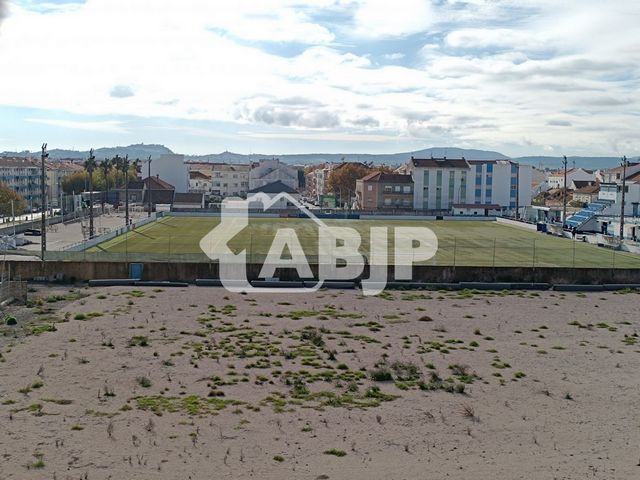
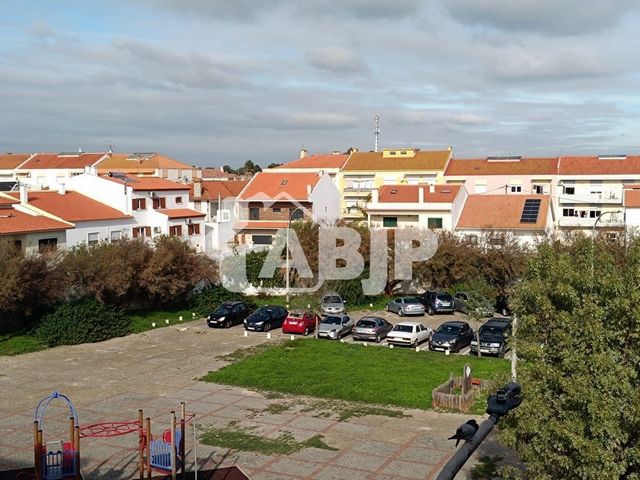
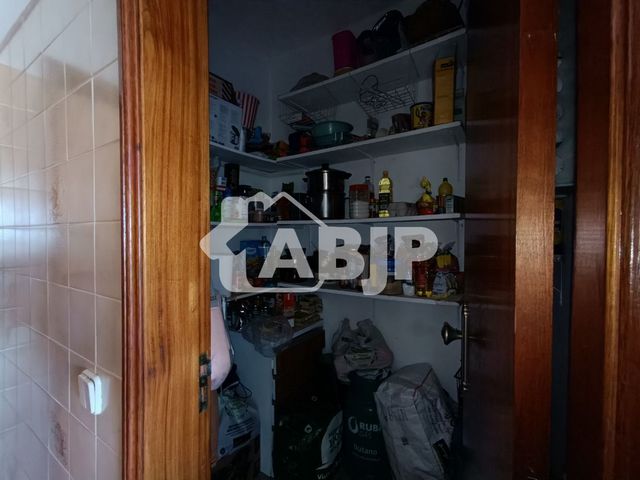


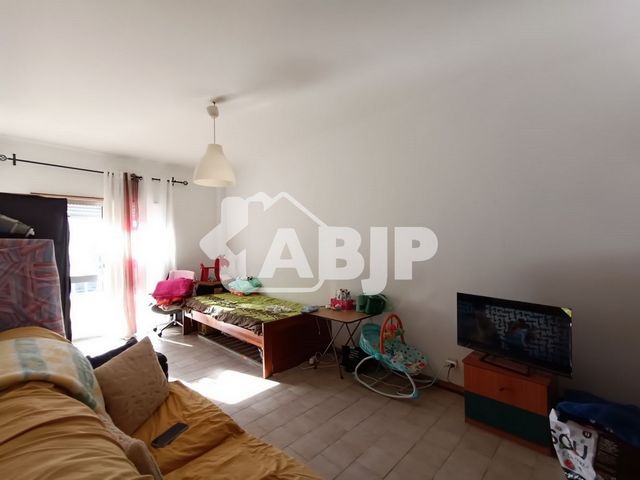
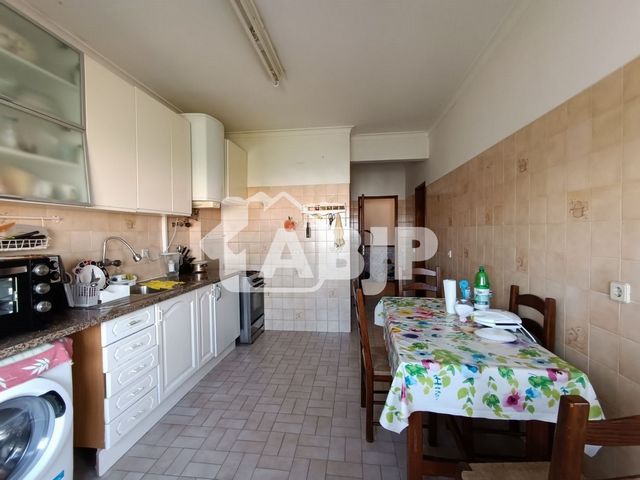
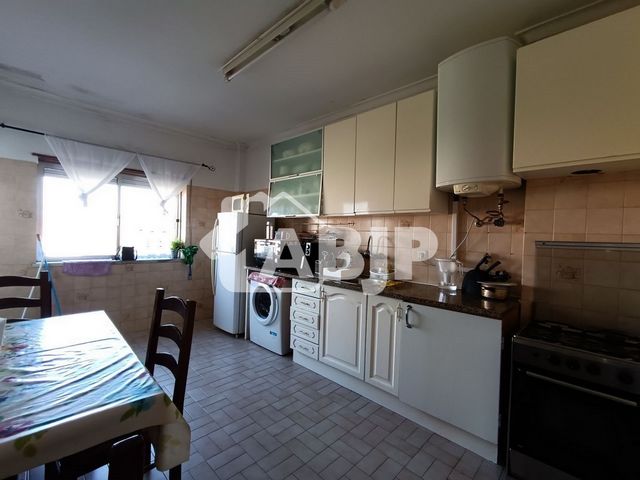
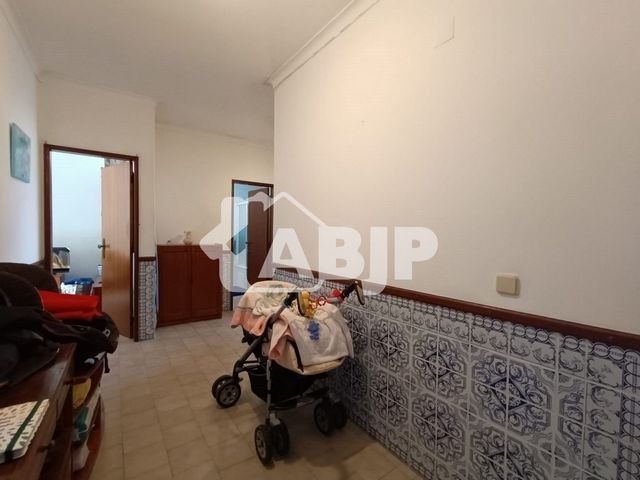


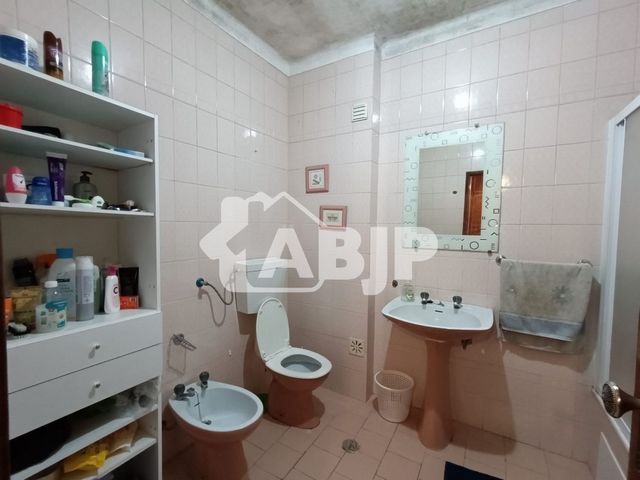


Well located, close to transport, services, schools.
3rd floor without elevator.Until the mid-nineteenth century, the region of Pinhal Novo was a place of passage with three major roads, two directed to Spain and the other in a south-north direction that joined, by land, the rivers Tagus and Sado.
Some dispersed settlement characterized the landscape of the "Other Band", and until the beginning of the twentieth century, it was structured on the basis of different types of exploration units, such as fences, farms and couples, of which the farms stood out, both for the quantity and for the diversity of typologies.
The history of the formation of the parish may begin in 1833, when the Círio da Carregueira was founded, which is probably the oldest manifestation of organization in Pinhal Novo.
In 1856 the construction of the railway began and, in the following year, the Círio dos Olhos de Água began.
The official inauguration of the railway lines, from Barreiro to Vendas Novas and Pinhal Novo to Setúbal, took place on February 1, 1861.
The name Pinhal Novo must date from this time, the place, previously called Lagoa da Palha. The first written reference to the name Pinhal Novo is from March 27, 1959, in an article published in the newspaper "O Cisne do Sado".
The first truly important public act for the life of the locality took place on July 18, 1872, when José Maria dos Santos donated a plot of land to the population of Pinhal Novo for the construction of a chapel and for the festivities. The donation was signed by the residents, António Domingos Macau and José Nogueira de Faria.
The construction of the church had begun on the eve of the signing of the donation document and was completed in 1874, with the first mass being celebrated on February 2 of the same year.
In the meantime, the settlement of Pinhal Novo was evolving. A sign of this evolution was the foundation of the Sociedade Filarmónica União Agrícola in 1896 and, in 1910, the creation of União Futebol Clube Pinhalnovense.
A fundamental document for the history of the evolution of the settlement of the region is, even today, the communication presented by the eminent geographer Orlando Ribeiro "The transformations of habitat and cultures in the region of Pinhal Novo (Portugal)", to the XVI International Congress of Geography of Lisbon, republished by the Parish Council, in 1998, in the collection "Origins and Destinations".
The first primary school in Pinhal Novo was inaugurated in 1950 at the same time as the National Republican Guard post and the Agricultural Market, the "Praça". The Pinhal Novo Volunteer Firefighters were created in 1951.
Throughout the evolution of Pinhal Novo, the railway has been the backbone of the parish because, just as it divides the village in half, it also unites its past and its future.
It should be noted that the population, initially scarce, has been increasing. The "caramels" from Beira Litoral and the Mondego Valley, the "ratinhos" from Beira and others from Alentejo. But the great demographic surge took place between 1970 and 1975, due to the settlement of the population coming from the Alentejo and the Algarve.
After the 25th of April 1974, with the subsequent consolidation of local power, Pinhal Novo experienced important improvements that effectively contributed to the improvement of the living conditions of the population of Pinhalnovense.
Pinhal Novo was elevated to the category of Village on March 11, 1988.
Currently and since 2010 it has been the preferred choice of those who want to live in an urban area and close to the countryside and nature.
with easy access to public transport and highways, close to major shopping areas and just a few minutes from Lisbon!Book your visit now
And come and see your future home! Ver más Ver menos 2-Zimmer-Wohnung mit guten Bereichen,
Gut gelegen, in der Nähe von Verkehrsmitteln, Dienstleistungen, Schulen.
3. Stock ohne Aufzug.Bis zur Mitte des neunzehnten Jahrhunderts war die Region von Pinhal Novo ein Durchgangsort mit drei Hauptstraßen, von denen zwei nach Spanien und die andere in Süd-Nord-Richtung führten, die auf dem Landweg die Flüsse Tejo und Sado verbanden.
Einige verstreute Siedlungen prägten die Landschaft des "Anderen Bandes", und bis zum Beginn des zwanzigsten Jahrhunderts war es auf der Grundlage verschiedener Arten von Erkundungseinheiten wie Zäunen, Bauernhöfe und Paare strukturiert, von denen sich die Bauernhöfe sowohl durch die Menge als auch durch die Vielfalt der Typologien auszeichneten.
Die Geschichte der Gründung der Pfarrei kann im Jahr 1833 beginnen, als das Círio da Carregueira gegründet wurde, das wahrscheinlich die älteste Organisationsform in Pinhal Novo ist.
Im Jahr 1856 wurde mit dem Bau der Eisenbahn begonnen und im folgenden Jahr wurde der Círio dos Olhos de Água begonnen.
Die offizielle Einweihung der Eisenbahnstrecken von Barreiro nach Vendas Novas und von Pinhal Novo nach Setúbal fand am 1. Februar 1861 statt.
Der Name Pinhal Novo muss aus dieser Zeit stammen, dem Ort, der früher Lagoa da Palha hieß. Die erste schriftliche Erwähnung des Namens Pinhal Novo stammt vom 27. März 1959 in einem Artikel, der in der Zeitung "O Cisne do Sado" veröffentlicht wurde.
Der erste wirklich wichtige öffentliche Akt für das Leben des Ortes fand am 18. Juli 1872 statt, als José Maria dos Santos der Bevölkerung von Pinhal Novo ein Grundstück für den Bau einer Kapelle und für die Feierlichkeiten schenkte. Die Spende wurde von den Bewohnern António Domingos Macau und José Nogueira de Faria unterzeichnet.
Der Bau der Kirche hatte am Vorabend der Unterzeichnung der Schenkungsurkunde begonnen und wurde 1874 abgeschlossen, wobei die erste Messe am 2. Februar desselben Jahres gefeiert wurde.
In der Zwischenzeit entwickelte sich die Besiedlung von Pinhal Novo. Ein Zeichen dieser Entwicklung war die Gründung der Sociedade Filarmónica União Agrícola im Jahr 1896 und die Gründung des União Futebol Clube Pinhalnovense im Jahr 1910.
Ein grundlegendes Dokument für die Geschichte der Entwicklung der Besiedlung der Region ist auch heute noch die Mitteilung des bedeutenden Geographen Orlando Ribeiro "Die Veränderungen des Lebensraums und der Kulturen in der Region Pinhal Novo (Portugal)" auf dem XVI. Internationalen Kongress für Geographie in Lissabon, die 1998 vom Pfarrgemeinderat in der Sammlung "Ursprünge und Ziele" neu veröffentlicht wurde.
Die erste Grundschule in Pinhal Novo wurde 1950 eingeweiht, zeitgleich mit dem Posten der Nationalen Republikanischen Garde und dem Agrarmarkt, dem "Praça". Die Freiwilligen Feuerwehrleute von Pinhal Novo wurden 1951 gegründet.
Während der gesamten Entwicklung von Pinhal Novo war die Eisenbahn das Rückgrat der Gemeinde, denn so wie sie das Dorf in zwei Hälften teilt, vereint sie auch seine Vergangenheit und seine Zukunft.
Es sei darauf hingewiesen, dass die anfänglich knappe Bevölkerung zugenommen hat. Die "Karamellbonbons" aus Beira Litoral und dem Mondego-Tal, die "Ratinhos" aus Beira und andere aus dem Alentejo. Der große Bevölkerungsanstieg fand jedoch zwischen 1970 und 1975 statt, da sich die Bevölkerung aus dem Alentejo und der Algarve ansiedelte.
Nach dem 25. April 1974, mit der anschließenden Konsolidierung der lokalen Macht, erlebte Pinhal Novo wichtige Verbesserungen, die effektiv zur Verbesserung der Lebensbedingungen der Bevölkerung von Pinhalnovense beitrugen.
Pinhal Novo wurde am 11. März 1988 in die Kategorie "Dorf" erhoben.
Derzeit und seit 2010 ist es die bevorzugte Wahl derjenigen, die in einem städtischen Gebiet und in der Nähe von Land und Natur leben möchten.
mit einfachem Zugang zu öffentlichen Verkehrsmitteln und Autobahnen, in der Nähe der wichtigsten Einkaufsstraßen und nur wenige Minuten von Lissabon entfernt!Buchen Sie jetzt Ihren Besuch
Und kommen Sie und sehen Sie sich Ihr zukünftiges Zuhause an! Apartamento T2 com boas áreas,
bem localizado, junto aos transportes, serviços, escolas.
3º andar sem elevador.Até aos meados do século XIX a região de Pinhal Novo era um local de passagem com três grandes vias, duas direcionadas a Espanha e outra no sentido Sul-Norte que unia, por via terrestre, os rios Tejo e Sado.
Algum povoamento disperso caracterizava a paisagem da “Outra Banda”, e até ao início do século XX, estruturava-se com base em diferentes tipos de unidades de exploração, como as cercas, as quintas e os casais, das quais se destacavam as quintas, quer pela quantidade e quer pela diversidade de tipologias.
A história da formação da freguesia poderá iniciar-se no ano de 1833, altura em que estaria fundado o Círio da Carregueira, que constitui, muito provavelmente, a mais antiga manifestação de organização em Pinhal Novo.
Em 1856 começam as obras do caminho de ferro e, no ano seguinte, teve o seu início o Círio dos Olhos de Água.
A inauguração oficial das linhas do caminho de ferro, de Barreiro a Vendas Novas e Pinhal Novo a Setúbal, ocorre a 1 de fevereiro de 1861.
Deve datar desta época o nome Pinhal Novo, o local, anteriormente era designado Lagoa da Palha. A primeira referência escrita ao nome Pinhal Novo é de 27 de março de 1959, numa notícia publicada no jornal “O Cisne do Sado”.
O primeiro ato público verdadeiramente importante para a vida da localidade acontece a 18 de julho de 1872, trata-se da doação feita por José Maria dos Santos, à população de Pinhal Novo de um terreno para a construção de uma capela e para a realização dos festejos. A doação foi assinada por parte dos moradores, por António Domingos Macau e José Nogueira de Faria.
As obras de construção da igreja haviam sido iniciadas na véspera da assinatura do documento de doação e concluíram-se em 1874, celebrando-se a primeira missa no dia 2 de fevereiro do mesmo ano.
Entretanto a povoação de Pinhal Novo ia evoluindo. Sinal dessa evolução foi a fundação da, atualmente assim designada, Sociedade Filarmónica União Agrícola no ano de 1896 e, em 1910, a criação do União Futebol Clube Pinhalnovense.
Um documento fundamental para a história da evolução do povoamento da região é, ainda hoje, a comunicação apresentada pelo eminente geógrafo Orlando Ribeiro “As transformações do habitat e das culturas na região de Pinhal Novo (Portugal)”, ao XVI Congresso Internacional de Geografia de Lisboa, reeditado pela Junta de Freguesia, em 1998, na coleção “Origens e Destinos”.
A primeira escola primária de Pinhal Novo é inaugurada em 1950 em simultâneo com o posto da Guarda Nacional Republicana e o Mercado Agrícola, a “Praça”. Os Bombeiros Voluntários de Pinhal Novo surgem no ano de 1951.
Ao longo da evolução de Pinhal Novo o caminho de ferro foi sendo a espinha dorsal da freguesia pois, assim como divide a povoação ao meio, une também o seu passado e o seu futuro.
Refira-se que a população, inicialmente escassa, foi sofrendo acréscimos. Os “caramelos” da Beira Litoral e do Vale do Mondego, os “ratinhos” da Beira e outros vindos do Alentejo. Mas o grande surto demográfico teve lugar entre 1970 e 1975, devida à fixação de população vinda do Alentejo e do Algarve.
Após o 25 de abril de 1974, com a subsequente consolidação do poder local, Pinhal Novo conheceu importantes melhoramentos que contribuíram, efetivamente, para a melhoria das condições de vida da população Pinhalnovense.
Pinhal Novo foi elevado à categoria de Vila a 11 de março de 1988.
Atualmente e desde 2010 tem sido escolha preferencial de quem quer viver numa zona urbana e perto do campo e da natureza.
com fácil acesso a transporte públicos, e autoestradas, perto de grandes zonas comerciais e a uns escassos minutos de Lisboa!Marque já a sua Visita
e venha conhecer a sua futura casa! 2 bedroom apartment with good areas,
Well located, close to transport, services, schools.
3rd floor without elevator.Until the mid-nineteenth century, the region of Pinhal Novo was a place of passage with three major roads, two directed to Spain and the other in a south-north direction that joined, by land, the rivers Tagus and Sado.
Some dispersed settlement characterized the landscape of the "Other Band", and until the beginning of the twentieth century, it was structured on the basis of different types of exploration units, such as fences, farms and couples, of which the farms stood out, both for the quantity and for the diversity of typologies.
The history of the formation of the parish may begin in 1833, when the Círio da Carregueira was founded, which is probably the oldest manifestation of organization in Pinhal Novo.
In 1856 the construction of the railway began and, in the following year, the Círio dos Olhos de Água began.
The official inauguration of the railway lines, from Barreiro to Vendas Novas and Pinhal Novo to Setúbal, took place on February 1, 1861.
The name Pinhal Novo must date from this time, the place, previously called Lagoa da Palha. The first written reference to the name Pinhal Novo is from March 27, 1959, in an article published in the newspaper "O Cisne do Sado".
The first truly important public act for the life of the locality took place on July 18, 1872, when José Maria dos Santos donated a plot of land to the population of Pinhal Novo for the construction of a chapel and for the festivities. The donation was signed by the residents, António Domingos Macau and José Nogueira de Faria.
The construction of the church had begun on the eve of the signing of the donation document and was completed in 1874, with the first mass being celebrated on February 2 of the same year.
In the meantime, the settlement of Pinhal Novo was evolving. A sign of this evolution was the foundation of the Sociedade Filarmónica União Agrícola in 1896 and, in 1910, the creation of União Futebol Clube Pinhalnovense.
A fundamental document for the history of the evolution of the settlement of the region is, even today, the communication presented by the eminent geographer Orlando Ribeiro "The transformations of habitat and cultures in the region of Pinhal Novo (Portugal)", to the XVI International Congress of Geography of Lisbon, republished by the Parish Council, in 1998, in the collection "Origins and Destinations".
The first primary school in Pinhal Novo was inaugurated in 1950 at the same time as the National Republican Guard post and the Agricultural Market, the "Praça". The Pinhal Novo Volunteer Firefighters were created in 1951.
Throughout the evolution of Pinhal Novo, the railway has been the backbone of the parish because, just as it divides the village in half, it also unites its past and its future.
It should be noted that the population, initially scarce, has been increasing. The "caramels" from Beira Litoral and the Mondego Valley, the "ratinhos" from Beira and others from Alentejo. But the great demographic surge took place between 1970 and 1975, due to the settlement of the population coming from the Alentejo and the Algarve.
After the 25th of April 1974, with the subsequent consolidation of local power, Pinhal Novo experienced important improvements that effectively contributed to the improvement of the living conditions of the population of Pinhalnovense.
Pinhal Novo was elevated to the category of Village on March 11, 1988.
Currently and since 2010 it has been the preferred choice of those who want to live in an urban area and close to the countryside and nature.
with easy access to public transport and highways, close to major shopping areas and just a few minutes from Lisbon!Book your visit now
And come and see your future home! Appartement de 2 chambres avec de bonnes zones,
Bien situé, proche des transports, services, écoles.
3ème étage sans ascenseur.Jusqu’au milieu du XIXe siècle, la région de Pinhal Novo était un lieu de passage avec trois routes principales, deux dirigées vers l’Espagne et l’autre dans une direction sud-nord qui reliaient, par voie terrestre, les fleuves Tage et Sado.
Jusqu’au début du XXe siècle, il s’est structuré sur la base de différents types d’unités d’exploration, telles que des clôtures, des fermes et des couples, dont les fermes se distinguaient, tant par leur quantité que par la diversité des typologies.
L’histoire de la formation de la paroisse peut commencer en 1833, lorsque le Círio da Carregueira a été fondé, qui est probablement la plus ancienne manifestation d’organisation à Pinhal Novo.
En 1856, la construction du chemin de fer a commencé et, l’année suivante, le Círio dos Olhos de Água a commencé.
L’inauguration officielle des lignes de chemin de fer, de Barreiro à Vendas Novas et de Pinhal Novo à Setúbal, a eu lieu le 1er février 1861.
Le nom Pinhal Novo doit dater de cette époque, l’endroit, anciennement appelé Lagoa da Palha. La première référence écrite au nom Pinhal Novo date du 27 mars 1959, dans un article publié dans le journal « O Cisne do Sado ».
Le premier acte public vraiment important pour la vie de la localité a eu lieu le 18 juillet 1872, lorsque José Maria dos Santos a fait don d’un terrain à la population de Pinhal Novo pour la construction d’une chapelle et pour les festivités. La donation a été signée par les résidents, António Domingos Macau et José Nogueira de Faria.
La construction de l’église avait commencé la veille de la signature du document de donation et s’est achevée en 1874, la première messe étant célébrée le 2 février de la même année.
Pendant ce temps, la colonie de Pinhal Novo évoluait. Un signe de cette évolution fut la fondation de la Sociedade Filarmónica União Agrícola en 1896 et, en 1910, la création de l’União Futebol Clube Pinhalnovense.
Un document fondamental pour l’histoire de l’évolution du peuplement de la région est, encore aujourd’hui, la communication présentée par l’éminent géographe Orlando Ribeiro « Les transformations de l’habitat et des cultures dans la région de Pinhal Novo (Portugal) », au XVIe Congrès International de Géographie de Lisbonne, rééditée par le Conseil paroissial, en 1998, dans la collection « Origines et Destinations ».
La première école primaire de Pinhal Novo a été inaugurée en 1950 en même temps que le poste de la Garde nationale républicaine et le marché agricole, la « Praça ». Les pompiers volontaires de Pinhal Novo ont été créés en 1951.
Tout au long de l’évolution de Pinhal Novo, le chemin de fer a été l’épine dorsale de la paroisse car, tout comme il divise le village en deux, il unit également son passé et son avenir.
Il est à noter que la population, initialement rare, a augmenté. Les « caramels » de Beira Litoral et de la vallée du Mondego, les « ratinhos » de Beira et d’autres de l’Alentejo. Mais la grande poussée démographique a eu lieu entre 1970 et 1975, en raison de l’installation de la population venant de l’Alentejo et de l’Algarve.
Après le 25 avril 1974, avec la consolidation de l’énergie locale, Pinhal Novo a connu d’importantes améliorations qui ont contribué efficacement à l’amélioration des conditions de vie de la population de Pinhalnovense.
Pinhal Novo a été élevé à la catégorie de village le 11 mars 1988.
Actuellement et depuis 2010, c’est le choix préféré de ceux qui veulent vivre dans une zone urbaine et à proximité de la campagne et de la nature.
avec un accès facile aux transports en commun et aux autoroutes, à proximité des principales zones commerçantes et à quelques minutes de Lisbonne !Réservez votre visite dès maintenant
Et venez voir votre future maison ! 2 izbový apartmán s dobrými priestormi,
Dobre umiestnený, v blízkosti dopravy, služieb, škôl.
3. poschodie bez výťahu.Až do polovice devätnásteho storočia bol región Pinhal Novo miestom prechodu s tromi hlavnými cestami, dvoma smerujúcimi do Španielska a druhými v smere juh-sever, ktoré sa spojili po zemi s riekami Tagus a Sado.
Niektoré rozptýlené osídlenie charakterizovalo krajinu "Other Band" a až do začiatku dvadsiateho storočia bolo štruktúrované na základe rôznych typov prieskumných jednotiek, ako sú ploty, farmy a páry, z ktorých farmy vynikli, a to tak pre množstvo, ako aj pre rozmanitosť typológií.
História vzniku farnosti sa môže začať písať v roku 1833, kedy bola založená Círio da Carregueira, ktorá je pravdepodobne najstarším prejavom organizácie v Pinhal Novo.
V roku 1856 sa začala výstavba železnice a v nasledujúcom roku sa začalo s výstavbou Círio dos Olhos de Água.
Oficiálne otvorenie železničných tratí z Barreira do Vendas Novas a Pinhal Novo do Setúbalu sa uskutočnilo 1. februára 1861.
Názov Pinhal Novo musí pochádzať z tejto doby, miesto, predtým nazývané Lagoa da Palha. Prvá písomná zmienka o mene Pinhal Novo je z 27. marca 1959 v článku uverejnenom v novinách "O Cisne do Sado".
Prvý skutočne dôležitý verejný akt pre život lokality sa uskutočnil 18. júla 1872, keď José Maria dos Santos daroval pozemok obyvateľstvu Pinhal Novo na výstavbu kaplnky a na slávnosti. Dar podpísali obyvatelia António Domingos Macau a José Nogueira de Faria.
Stavba kostola sa začala v predvečer podpísania donačnej listiny a bola dokončená v roku 1874, pričom prvá svätá omša bola slávená 2. februára toho istého roku.
Medzitým sa osada Pinhal Novo vyvíjala. Znakom tohto vývoja bolo založenie Sociedade Filarmónica União Agrícola v roku 1896 a v roku 1910 vytvorenie União Futebol Clube Pinhalnovense.
Základným dokumentom pre históriu vývoja osídlenia regiónu je aj dnes oznámenie, ktoré predložil významný geograf Orlando Ribeiro "Transformácie biotopov a kultúr v regióne Pinhal Novo (Portugalsko)" XVI. medzinárodnému kongresu geografie v Lisabone, ktorý znovu vydala farská rada v roku 1998 v zbierke "Počiatky a destinácie".
Prvá základná škola v Pinhal Novo bola slávnostne otvorená v roku 1950 v rovnakom čase ako post Národnej republikánskej gardy a poľnohospodársky trh "Praça". Dobrovoľní hasiči Pinhal Novo boli vytvorení v roku 1951.
Počas celého vývoja Pinhal Novo bola železnica chrbtovou kosťou farnosti, pretože tak ako rozdeľuje dedinu na polovicu, spája aj jej minulosť a budúcnosť.
Treba poznamenať, že populácia, spočiatku vzácna, sa zvyšuje. "Karamelky" z Beira Litoral a údolia Mondego, "ratinhos" z Beiry a ďalšie z Alentejo. Ale veľký demografický nárast nastal medzi rokmi 1970 a 1975 kvôli osídleniu obyvateľstva pochádzajúceho z Alentejo a Algarve.
Po 25. apríli 1974, s následnou konsolidáciou miestnej moci, zažil Pinhal Novo dôležité zlepšenia, ktoré účinne prispeli k zlepšeniu životných podmienok obyvateľstva Pinhalnovense.
Pinhal Novo bol povýšený do kategórie Village 11. marca 1988.
V súčasnosti a od roku 2010 je preferovanou voľbou tých, ktorí chcú žiť v mestskej oblasti a v blízkosti vidieka a prírody.
s ľahkým prístupom k verejnej doprave a diaľniciam, v blízkosti hlavných nákupných oblastí a len pár minút od Lisabonu!Rezervujte si návštevu teraz
A príďte sa pozrieť na svoj budúci domov! Appartamento con 2 camere da letto con buone aree,
Ben posizionato, vicino a trasporti, servizi, scuole.
3° piano senza ascensore.Fino alla metà dell'Ottocento, la regione di Pinhal Novo era un luogo di passaggio con tre strade principali, due dirette verso la Spagna e l'altra in direzione sud-nord che si univa, via terra, ai fiumi Tago e Sado.
Alcuni insediamenti sparsi caratterizzarono il paesaggio dell'"Altra Banda", e fino all'inizio del Novecento, fu strutturato sulla base di diverse tipologie di unità esplorative, quali recinzioni, poderi e coppie, di cui le masserie si distinguevano, sia per la quantità che per la diversità delle tipologie.
La storia della formazione della parrocchia può iniziare nel 1833, quando fu fondato il Círio da Carregueira, che è probabilmente la più antica manifestazione di organizzazione a Pinhal Novo.
Nel 1856 iniziò la costruzione della ferrovia e, l'anno successivo, iniziò il Círio dos Olhos de Água.
L'inaugurazione ufficiale delle linee ferroviarie, da Barreiro a Vendas Novas e da Pinhal Novo a Setúbal, ebbe luogo il 1º febbraio 1861.
Il nome Pinhal Novo deve risalire a questo periodo, il luogo, precedentemente chiamato Lagoa da Palha. Il primo riferimento scritto al nome Pinhal Novo risale al 27 marzo 1959, in un articolo pubblicato sul quotidiano "O Cisne do Sado".
Il primo atto pubblico veramente importante per la vita della località avvenne il 18 luglio 1872, quando José Maria dos Santos donò un appezzamento di terreno alla popolazione di Pinhal Novo per la costruzione di una cappella e per i festeggiamenti. La donazione è stata firmata dai residenti, António Domingos Macau e José Nogueira de Faria.
La costruzione della chiesa era iniziata alla vigilia della firma del documento di donazione e fu completata nel 1874, con la prima messa celebrata il 2 febbraio dello stesso anno.
Nel frattempo, l'insediamento di Pinhal Novo si stava evolvendo. Un segno di questa evoluzione fu la fondazione della Sociedade Filarmónica União Agrícola nel 1896 e, nel 1910, la creazione dell'União Futebol Clube Pinhalnovense.
Un documento fondamentale per la storia dell'evoluzione dell'insediamento della regione è, ancora oggi, la comunicazione presentata dall'eminente geografo Orlando Ribeiro "Le trasformazioni dell'habitat e delle culture nella regione di Pinhal Novo (Portogallo)", al XVI Congresso Internazionale di Geografia di Lisbona, ripubblicata dal Consiglio Parrocchiale, nel 1998, nella collana "Origini e Destinazioni".
La prima scuola elementare di Pinhal Novo fu inaugurata nel 1950 contemporaneamente al posto della Guardia Nazionale Repubblicana e al Mercato Agricolo, la "Praça". I Vigili del Fuoco Volontari di Pinhal Novo sono stati creati nel 1951.
Nel corso dell'evoluzione di Pinhal Novo, la ferrovia è stata la spina dorsale della parrocchia perché, così come divide il villaggio a metà, unisce anche il suo passato e il suo futuro.
Va notato che la popolazione, inizialmente scarsa, è andata aumentando. Le caramelle di Beira Litoral e della Valle di Mondego, i "ratinhos" di Beira e altri dell'Alentejo. Ma la grande impennata demografica si ebbe tra il 1970 e il 1975, a causa dell'insediamento della popolazione proveniente dall'Alentejo e dall'Algarve.
Dopo il 25 aprile 1974, con il successivo consolidamento del potere locale, Pinhal Novo conobbe importanti miglioramenti che contribuirono efficacemente al miglioramento delle condizioni di vita della popolazione di Pinhalnovense.
Pinhal Novo è stato elevato alla categoria di Villaggio l'11 marzo 1988.
Attualmente e dal 2010 è la scelta preferita di chi vuole vivere in un'area urbana e vicina alla campagna e alla natura.
con facile accesso ai trasporti pubblici e alle autostrade, vicino alle principali aree commerciali e a pochi minuti da Lisbona!Prenota ora la tua visita
E vieni a vedere la tua futura casa!